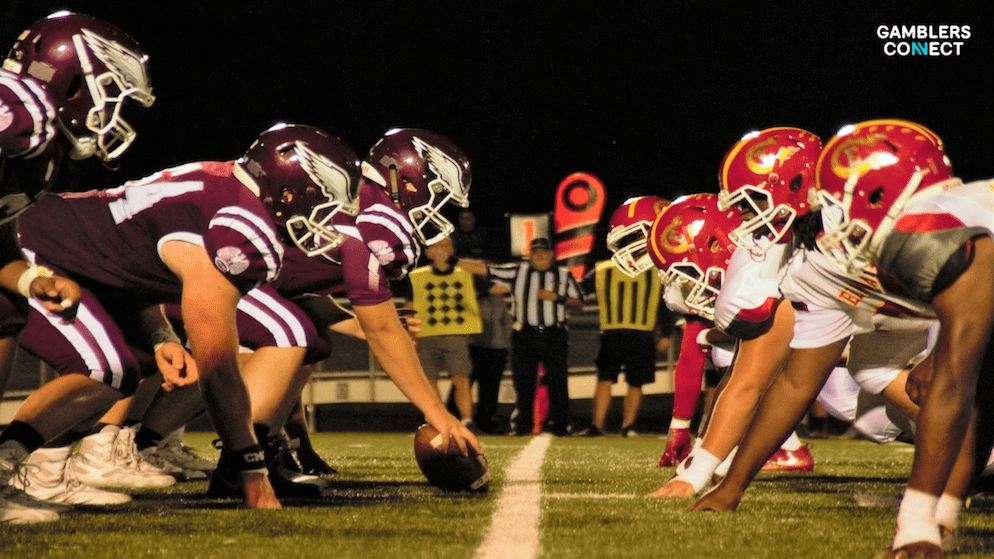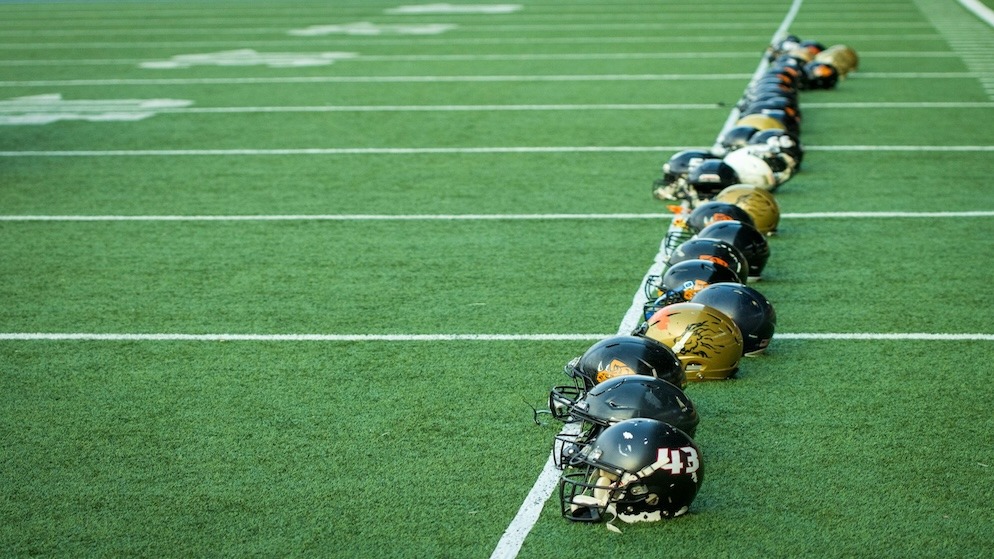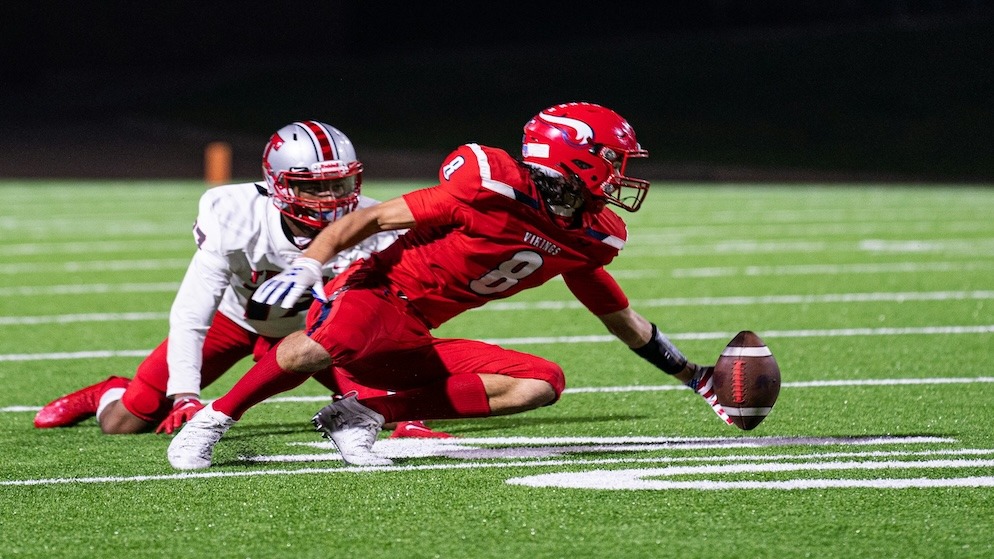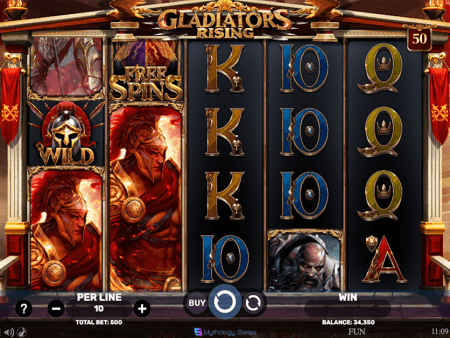
Beyond the Clock: The True Answer to How Long Do Football Games Last
For the uninitiated fan sitting down to watch their first American football game, one of the most immediate and often surprising discoveries is the significant disparity between the official game clock and the actual time it takes to complete the contest. The question of how long do football games last has a simple, yet profoundly misleading answer: sixty minutes. While the regulation clock does indeed account for one hour of play, the reality of the viewing experience is a multi-hour commitment, an event shaped by a complex and interlocking system of rules, strategic pauses, media requirements, and the very nature of the sport itself.
This comprehensive guide will serve as your definitive resource, providing a thorough exploration of every factor that contributes to the true length of a football game. We will deconstruct the game clock, examine the myriad reasons for stoppages, and compare the various levels of the sport, from the professional stage to youth leagues. By the end, you will have a complete understanding of why a sixty-minute game is almost always a three-hour spectacle and a full answer to the question of how long do football games last.
The 60-Minute Myth: Deconstructing Regulation Time
At its core, the structure of an American football game is straightforward. The official rules, as dictated by the National Football League (NFL) for the professional level, divide the game into four quarters, each lasting fifteen minutes. This totals sixty minutes of regulation playing time. Separating the first and second halves of the game is a halftime break, which in the NFL is mandated to be thirteen minutes long.
For major events like the Super Bowl, this intermission is extended significantly, often to thirty minutes, to accommodate elaborate entertainment productions. Therefore, even by the most basic on-paper calculation, a standard game is at least seventy-three minutes from the opening kickoff to the final whistle, before any other factors are considered.
However, this is merely the starting point for understanding how long do football games usually last. The true answer lies not in the time that is on the clock, but in the vast amount of time the clock is not running at all.
The Heart of the Matter: Why the Clock Constantly Stops
Unlike sports such as soccer, which feature a continuously running clock for most of each half, American football is a game of discrete, explosive plays separated by periods of strategic realignment. This stop-and-start nature is the single biggest contributor to the game’s extended duration.
The game clock is a meticulously controlled element that ceases to run under a wide variety of circumstances, turning a 60-minute contest into a much longer affair. Understanding these stoppages is essential to grasping how long do american football games last.
- An incomplete pass is one of the most frequent reasons for a clock stoppage. Whenever the quarterback throws the ball and it is not caught by a receiver, instead hitting the ground, the clock immediately stops. It does not restart until the ball is snapped for the very next play. In the pass-heavy offenses of the modern NFL, this occurs dozens of times per game, with each instance adding precious seconds and minutes to the real-time duration. Similarly, when a player carrying the ball runs out of bounds, the clock stops. This is often a strategic move used by teams late in a half to conserve time, but it also happens naturally throughout the game, further extending the overall length.
- Scoring plays inherently bring the game to a halt. After a touchdown, the clock stops and remains frozen during the subsequent extra-point attempt or two-point conversion, as well as the ensuing kickoff to the other team. The entire sequence, from the touchdown to the start of the next offensive drive, can easily consume several real-world minutes while the game clock is static. The same principle applies to successful field goals, where the clock stops upon the kick and does not resume until the kickoff.
- Penalties are another major factor. When an official throws a penalty flag for an infraction, the play is immediately halted. The referee must then announce the penalty to the teams and the crowd, the yardage is marked off, and the ball is reset. This entire process can take a minute or more, all while the game clock is paused. With an average of over a dozen penalties per NFL game, the cumulative effect is significant.
- Timeouts provide deliberate pauses in the action. Each team is allocated three timeouts per half, which they can use strategically to stop the clock, rest players, or discuss strategy. Each of these timeouts can last up to two minutes. Additionally, there are official timeouts for injuries, which can be lengthy depending on the severity of the issue and the need for medical attention on the field. The referee can also call an official timeout for administrative purposes.
- Perhaps the largest contributor to the length of a televised game is the commercial break. The broadcast of how long do football games last on tv is structured to include a set number of commercial breaks per quarter. These breaks are strategically placed after scoring plays, during timeouts, and following punts or kickoffs. These interruptions, which are necessary for the financial model of broadcast television, add a substantial amount of time to the game that has no bearing on the on-field action. This is the primary reason why the answer to how long do football games typically last is so much longer for viewers at home than the sixty minutes shown on the screen.
- Replay challenges and reviews add another layer of stoppage. Coaches are given the ability to challenge certain rulings on the field they believe are incorrect. This initiates a formal review process where the referee examines video replays under a hood on the sideline. This process is designed to ensure accuracy but can take several minutes to complete, all while the game clock is frozen. Furthermore, within the last two minutes of each half, all reviews are initiated by a replay official in the booth, adding potential delays to the most critical parts of the game.
- Finally, the two-minute warning serves as a mandatory, automatic timeout at the end of the second and fourth quarters. It functions as a guaranteed television commercial break and gives teams a crucial moment to plan their final strategies for the half. All of these stoppages compound to create the three-hour runtime that fans have come to expect, providing a complex but complete answer to the question of how long do a football game last.

How Long Do Football Games Last at the Professional vs. Amateur Level?
When considering how long do football games last, it is important to distinguish between the professional and amateur levels of the sport. While the core rules are similar, the structure, pace, and presentation of the games are vastly different, leading to significant variations in their real-time duration.
- Professional football, epitomized by the NFL, is a highly polished entertainment product. Games are meticulously managed for television broadcast, with a rigid structure of commercial breaks that ensures a specific rhythm and length. The speed and complexity of the professional game also lead to more intricate plays, more frequent substitutions, and a greater likelihood of official reviews, all of which extend the time. The answer to how long do pro football games last is intrinsically tied to the commercial and operational demands of the league.
- Amateur football, which includes college, high school, and youth leagues, operates under a different set of priorities. While still competitive, the focus is more on player development, and the games are not subject to the same stringent broadcast requirements. Timeouts may be shorter, and there are fewer, if any, prolonged breaks for national television commercials. Furthermore, the clock management rules can differ. For example, in many high school leagues, the clock may run more continuously after certain plays where it would stop in the NFL or college. This results in a faster-paced game with fewer interruptions.
Therefore, the answer to how long do highschool football games last is generally shorter than the three-hour-plus standard of the professional and major college ranks. The same principle applies when asking how long do junior varsity football games last or how long do middle school football games last; as the level of play decreases, so does the overall game length due to simplified rules and a lack of external commercial pressures.
A Tale of Three Timers: NFL vs. College vs. High School
The specific rules governing the game clock are the most significant differentiators in game length across the main levels of American football. Answering the question of how long do football games last requires a detailed look at these variations.
The NFL operates with the most complex set of timing rules, designed for a professional product. A standard answer to how long do nfl football games last is around three hours and twelve minutes. The clock stops after every incomplete pass and every time a player runs out of bounds. The two-minute warning provides a guaranteed stoppage at the end of each half. These factors, combined with the rigid commercial break structure, create a predictable and extended runtime. The duration of how long do professional football games last is a finely tuned television event.
College football games are notorious for being even longer than their professional counterparts. The common answer to how long do college football games last is approximately three hours and twenty-four minutes. A key rule difference is how the clock operates after a team makes a first down. In college football, the clock briefly stops whenever a team achieves a first down to allow the chains to be reset on the sideline. While it restarts quickly, this momentary pause, happening dozens of times a game, adds up.
Additionally, college halftimes are longer, typically twenty minutes, to accommodate marching band performances. These factors contribute to why how long do college football games usually last often exceeds the NFL standard, and why how long do ncaa football games last can be a test of endurance for fans. For viewers, how long do college football games last on tv is a significant time commitment, often pushing four hours for high-profile matchups.
High school football games are considerably shorter. The regulation time is often reduced from 15-minute quarters to 12-minute quarters. This immediately shortens the game clock from 60 minutes to 48. Halftimes are also typically shorter, around 15 minutes. Furthermore, the clock rules are often simplified. For instance, in many states, the clock does not stop for a first down, and it may only stop briefly when a player goes out of bounds before being restarted once the ball is spotted.
As a result, the answer to how long do high school football games last is usually between two and two-and-a-half hours. This makes how long do hs football games last a more condensed and faster-paced experience for players and spectators alike.
| Level of Play | Regulation Quarters | Average Halftime | Key Clock Rule Differences | Average Real-Time Duration |
| NFL | 4 x 15 minutes | 13 minutes | Clock stops on out of bounds until next snap. Two-minute warning. | 3 hours, 12 minutes |
| College (NCAA) | 4 x 15 minutes | 20 minutes | Clock stops briefly for first downs. | 3 hours, 24 minutes |
| High School | 4 x 12 minutes | 15 minutes | Clock rules vary by state; often run more continuously. | 2 hours to 2.5 hours |
Beyond the Gridiron: A Cross-Sport Comparison
To put the length of an American football game into perspective, it is useful to compare it to other major professional sports in North America. Each sport’s unique rules and structure dictate a different relationship between official playing time and actual duration.
The NFL, as we have established, turns 60 minutes of game time into a three-hour-plus event due to its stop-start nature.
NBA
The National Basketball Association (NBA) has 48 minutes of regulation time, divided into four 12-minute quarters. The clock stops frequently for fouls, timeouts, and out-of-bounds plays. An average NBA game lasts about two hours and fifteen minutes, making it a much shorter viewing experience than an NFL game.
MLB
Major League Baseball (MLB) is unique in that it has no game clock at all. The game is structured around nine innings, with each team getting three outs per inning. The length of a game is determined purely by the pace of play, the number of pitches, and the time between innings. The average nine-inning MLB game lasts just over three hours, making it very comparable in length to an NFL game, despite having no clock.
NHL
The National Hockey League (NHL) has 60 minutes of regulation time, divided into three 20-minute periods. The clock stops for whistles, but the periods of continuous play are generally longer and more fluid than in football. With two 18-minute intermissions between periods, an average NHL game lasts around two hours and thirty minutes.
This comparison highlights that while football’s official playing time is standard, its structure creates one of the longest and most drawn-out viewing experiences in major sports, largely due to the constant stoppages that are fundamental to its strategy and presentation.
| Sport (League) | Regulation Time | Clock Structure | Average Real-Time Duration |
| American Football (NFL) | 60 minutes | Frequent stoppages for plays, penalties, etc. | 3 hours, 12 minutes |
| Basketball (NBA) | 48 minutes | Stops on whistles, fouls, timeouts. | 2 hours, 15 minutes |
| Baseball (MLB) | No Clock (9 Innings) | Pace of play, no clock. | 3 hours, 3 minutes |
| Ice Hockey (NHL) | 60 minutes | Stops on whistles, more continuous play. | 2 hours, 30 minutes |
Variations on a Theme: Other Football Formats
Beyond the traditional 11-on-11 outdoor game, there are other formats of football, each with its own set of rules that affect game length. For those asking how long do arena football games last, the answer is tied to a faster-paced, higher-scoring version of the sport. Arena football is played on a smaller indoor field, and rules are designed to encourage offense.
While the game also has 60 minutes of regulation time, the clock rules are different, and a “mercy rule” can end a game early if one team has a commanding lead. Nonetheless, with high scores and frequent clock stoppages, an arena game can still last close to three hours.
Flag football is a non-contact version of the sport that is popular at the amateur and youth levels. The answer to how long do flag football games last is significantly shorter. Games typically consist of two 20 or 25-minute halves with a running clock that only stops in the final minutes of the game. With fewer penalties, no pads to slow players down, and a more continuous flow, a typical flag football game is usually completed in about one hour.
Overtime Explained: When 60 Minutes Isn’t Enough
If a game is tied at the end of regulation, the contest proceeds to overtime to determine a winner. The overtime rules have evolved over the years and can significantly extend the answer to how long do football games last. In the NFL regular season, overtime consists of a single 10-minute period. It is a modified sudden-death format. If the first team to possess the ball scores a touchdown, they win.
If they kick a field goal, the opposing team gets a possession to try and match or beat that score. If the score is still tied after the 10-minute period, the game ends in a draw. In the postseason, however, games cannot end in a tie. Overtime periods are 15 minutes long, and play will continue, with as many periods as necessary, until one team emerges as the victor, potentially adding another hour or more to the game’s total length.

Final Thoughts
The question of how long do football games last reveals the intricate and multi-layered nature of American football. The 60-minute game clock is merely a framework for a much larger event. The true duration is a product of the sport’s fundamental design: a strategic battle punctuated by pauses, governed by a complex set of timing rules, and presented as a serialized drama for a television audience.
From the constant clock stoppages for incomplete passes and penalties to the structured interruptions for commercials and timeouts, every element works to expand the game far beyond its official runtime. Whether it is a professional NFL contest lasting over three hours, a slightly longer college epic, or a condensed two-hour high school showdown, the relationship between game time and real time is a core part of the football experience. Understanding this dynamic provides a richer appreciation for the strategic depth and unique rhythm of one of America’s most popular sports.
Frequently Asked Questions (FAQ)
- How long do football games typically last? A professional (NFL) football game typically lasts about 3 hours and 12 minutes in real time, while a college (NCAA) game often lasts around 3 hours and 24 minutes. High school games are shorter, usually lasting between 2 and 2.5 hours.
- Why does a 60-minute football game take over three hours to complete? The main reason is the frequent stopping of the game clock. The clock stops for incomplete passes, when a player runs out of bounds, for scoring plays, penalties, timeouts, commercial breaks, injury delays, and replay reviews. These stoppages add a significant amount of real time to the game.
- How long do college football games last compared to the NFL? College football games usually last about 10-15 minutes longer than NFL games. This is primarily due to two rule differences: the clock briefly stops after every first down in college football, and college halftime breaks are longer (20 minutes vs. the NFL’s 13) to accommodate marching band performances.
- How long do football games last on tv? Televised football games are longer than non-televised games due to the inclusion of structured commercial breaks. These breaks, which occur after scores, during timeouts, and at other planned moments like the two-minute warning, add a substantial amount of time, making the broadcast of how long do nfl football games last a predictable three-hour-plus event.
- What is the shortest possible duration for a game? While there is no defined shortest duration, the fastest games would involve very few clock stoppages. This would mean lots of running plays that end in-bounds, few penalties, no timeouts, and quick scoring drives. However, even under these ideal conditions, a professional game would still last well over two hours due to halftime and other built-in administrative stoppages. The answer to how long do football games usually last will almost never be under two and a half hours for the professional level.





